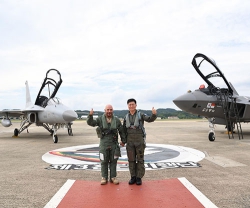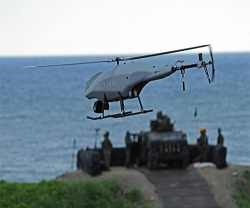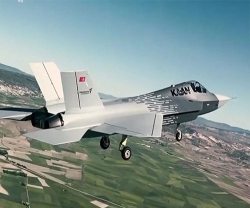More Chinese drones will be delivered to North Africa after Algeria confirmed an order of six of the new Caihong variant Unmanned Aerial Vehicles (UAVs), while a new delivery of Wing Loong UAVs to Egypt is in the pipeline.
Defense analysts said the new deals showed China’s “successful drone market strategies” overseas, reflecting accessible pricing and payment methods, the suitability of the goods and a readiness by China to fill the gap left by the US’ new drone export policy, which from 2020 restricted sales to close allies only.
According to MENADEFENSE, Algeria confirmed the order of half a dozen Caihong-5 UAVs. Price details were not disclosed, but it said the new drones would be delivered in March.
The new Caihong-5 UAVs would join squadrons of Caihong-3 and Caihong-4 drones Algeria had previously bought from China, bringing the number of the country’s air force attack drones to about 60 by the end of 2022, MENADEFEENSE added.
Caihong-5, or Rainbow-5, which was developed and manufactured by the state-owned China Aerospace Science and Technology Corporation (CASC), is China’s largest strike-capable drone able to counter the American MQ-9 Reaper UAV.
With an endurance of 60 hours and 1,000kg payload, it was designed for reconnaissance, surveillance, patrols, target positioning and strike missions.
Meanwhile, Egypt is in talks to buy a number of Wing Loong-1D drones from China for its air force, according to Tactical Report, a market information and intelligence agency website operated by the Gulf Cooperation Council (GCC).
Wing Loong-1D, or Pterosaur, is a multipurpose and military capable UAV developed by the Aviation Industry Corporation of China (AVIC), a sister manufacturer to CASC. Like the Caihong-5, Wing Loong-1D is another competitor for the American MQ-9 combat drones.
In the past decade, Chinese companies have delivered 220 unmanned combat aerial vehicles to 16 countries, mainly in the Middle East and Africa, according to reports by the Stockholm International Peace Research Institute.
Ben Ho, an Air Power Researcher from the military studies program at the S. Rajaratnam School of International Studies in Singapore, said Chinese drones might not be the best, but they were cheap and well designed to meet the demands of their potential clients.
“The relative success of Chinese drones’ exports exemplifies the saying ‘good enough might be better than perfect’,” he said, adding that the unit price of the American MQ-9 Reaper was about US$30 million - several times that of the Caihong-series drones.
“The Chinese platform might just be good enough to meet certain user requirements in the field … The fact that there are only a few major players in the combat drone market also makes Chinese UAVs more attractive in general.”
Ho said the US had changed its stance on drone export policy since 2020 to limit sales to its closest allies and partners, but China’s flexible after-sales service had allowed them “to steal a march on America”.
Beijing-based military expert Zhou Chenming said Chinese drone exporters’ flexible payment approaches also helped them win more deals.
“Chinese companies realized that those countries in North Africa are not rich, and allowed them not to pay cash, but by instalment, sometimes even to barter drones for local natural resources like minerals,” he said.
China is the world’s leading exporter of armed drones and has a wide range of systems in series production, with China Aerospace Science and Technology Corporation (CASC) and Aviation Industry Corporation of China (AVIC) driving the country’s military-civilian fusion campaign to expand the country’s overseas arms market.





















